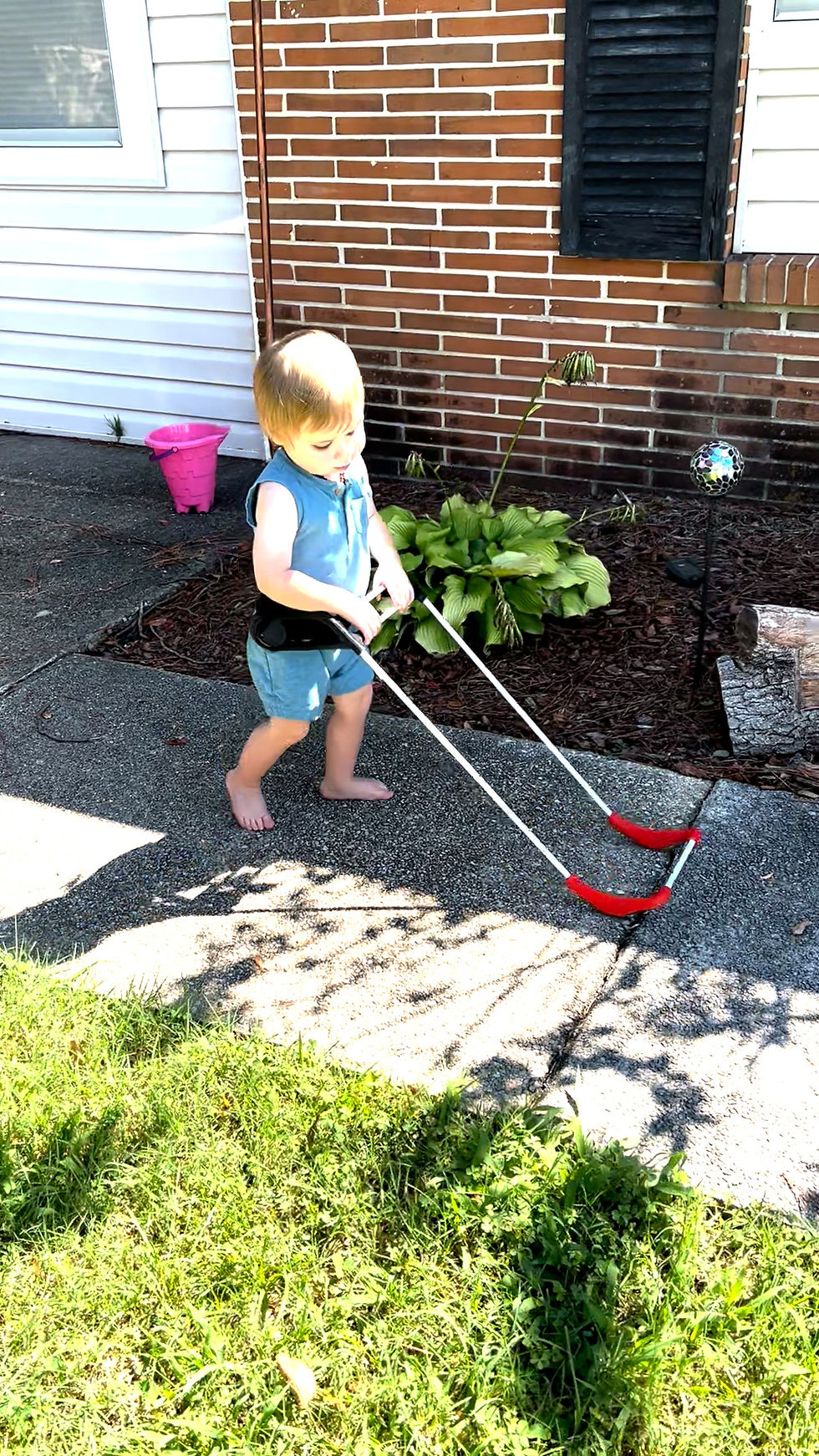Supporting Mobility: The Role of Pediatric Belt Canes
- Grace Ambrose-Zaken

- Jul 22
- 4 min read
For many children, mobility is crucial for developing independence and participating in daily activities. A wide range of mobility aids for children is available to help them navigate their world successfully. One such effective tool is the Pediatric Belt Cane. This blog post will discuss the importance of these aids, their benefits, and how they can transform the lives of children needing extra support.
Mobility Aids for Children
Mobility aids are designed to assist children with walking, improving their balance and overall mobility. Various devices are available, including walkers, wheelchairs, and, importantly, Pediatric Belt Canes. These canes not only provide support but also encourage children to stand tall and walk with confidence.
Children using mobility aids benefit immensely from increased independence. A study by the National Center for Biotechnology Information found that children utilizing mobility aids showed significant improvements in their social interactions and self-esteem. This transformation extends beyond physical movement; it affects their emotional and social well-being as well.

Notably, the choice of mobility aids can depend on various factors, including a child's specific needs and capabilities. Parents and caregivers must collaborate with healthcare providers to determine the most suitable options for their child. For instance, a young child might benefit from wearing the lightweight Pediatric Belt Cane for several years, while an older child might wear it for several months before learning to hold and push it ahead.
Benefits of Pediatric Belt Canes
Pediatric Belt Canes are specially designed to assist children in maintaining balance while walking. Here are some significant benefits of using these canes:
Improved Balance and Coordination: Pediatric belt canes provide essential support, helping children with a visual impairment stabilize themselves while walking. This support minimizes the risk of falls, allowing kids to explore their environments safely.
Encouragement of Independence: Many children with a visual impairment desire to do things on their own. The use of a Pediatric Belt Cane can empower them by giving them the confidence to move independently. This sense of autonomy is vital for their emotional growth.
Enhanced Mobility: These canes are designed to be lightweight and easily maneuverable, allowing children with a visual impairment to move around quickly. As they gain confidence in their mobility, it opens doors to new experiences, such as playing with friends or participating in school activities.
Promoting Proper Posture: These canes help children with a visual impairment maintain correct posture while walking. Good posture is critical for spinal health and overall physical development.

The benefits of using a Pediatric Belt Cane extend beyond the physical aspect. Children often experience greater emotional stability when they can move independently. With the right equipment, they can participate in physical activities that promote a healthy lifestyle and social connections.
Choosing the Right Mobility Aid
Selecting the appropriate mobility aid for a child requires careful consideration. Factors to consider include:
Age and Size: Children's needs vary significantly based on their age and physical dimensions. Ensure the mobility aid fits correctly and provides ample support.
Level of Independence: Some children may require full-time assistance, while others may need mobility aids for specific activities. Tailoring the choice of aid to the child’s needs helps maximize their independence.
Type of Condition: Children with varying medical conditions may have different requirements. Consequently, consulting with healthcare professionals who specialize in pediatric care can provide valuable insights.
Durability and Safety: Any mobility aid should be robust and safe for child use. Look for products that meet or exceed safety standards.

Pediatric Belt Canes are an excellent option, for parents to explore for their children with a visual impairment who also use motor aids such as walkers or specialized wheelchairs. Each child is unique, and exploring various combinations can help find the perfect match for their individual capabilities and requirements.
The Importance of Social Integration
Mobility aids like Pediatric Belt Canes do more than just assist in walking; they play a vital role in social integration. When children with mobility challenges have access to supportive devices, they can more easily engage in family activities, school events, and community outings.
An example is a child participating in group play at the park. With a Pediatric Belt Cane, the child can join friends in recreational activities, fostering meaningful connections and friendships. Additionally, social interactions contribute to cognitive and emotional development. As children engage with their peers, they learn vital lessons about teamwork, communication, and empathy.
Encouraging outdoor and social activities can significantly benefit children using mobility aids. For instance, organizing playdates or involving them in community sports can enhance their mobility skills while promoting friendship.
Final Thoughts on Enhancing Mobility in Children
Mobility aids, notably Pediatric Belt Canes, provide essential support for children facing challenges. They offer more than physical assistance; they help empower children, boost their confidence, and foster independence. The right mobility aids significantly improve their quality of life by enabling them to participate in everyday activities.
As a parent or caregiver, advocating for a child’s mobility needs is essential. Collaborating with medical professionals, educators, and therapists ensures that children receive tailored support. By investing in appropriate mobility aids, you can help your child navigate their world with confidence and ease.
As you explore options for helping your child, remember that every small step they take matters. Each stride made with a pediatric belt cane or other aids builds towards greater independence and social integration. Encouraging exploration and connection leads to a brighter future for children, allowing them to thrive in an inclusive environment.







Comments